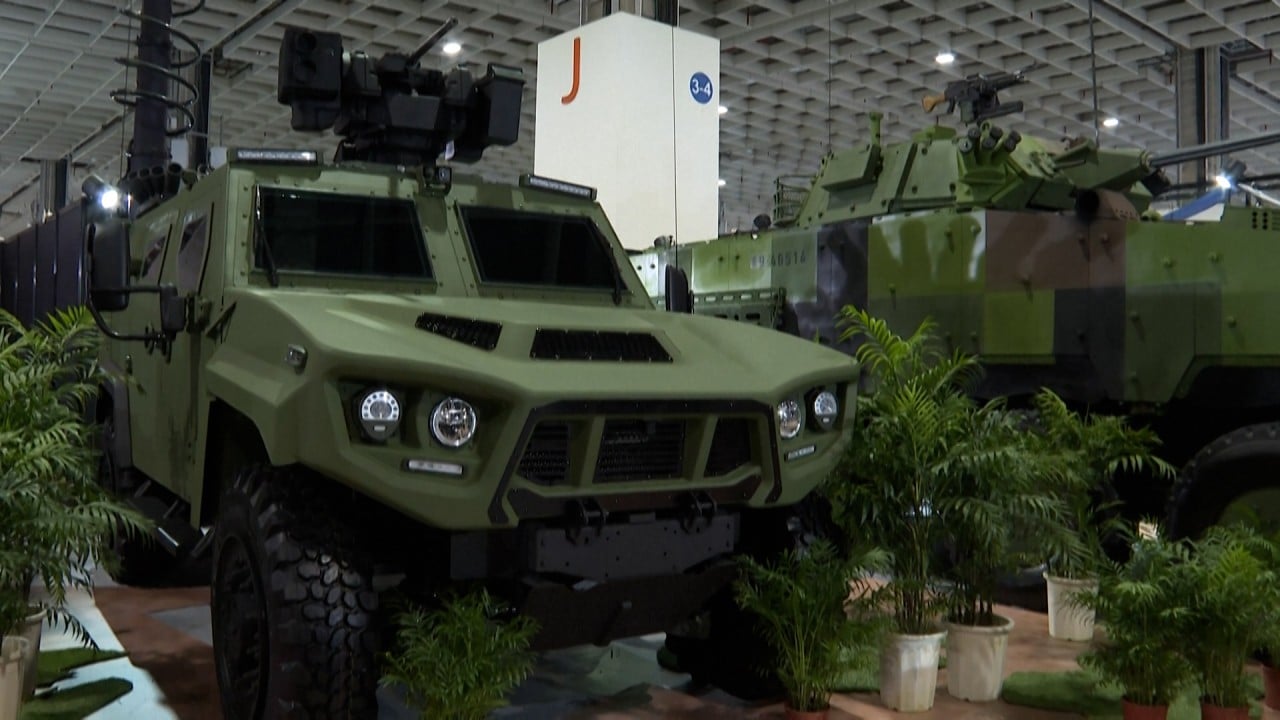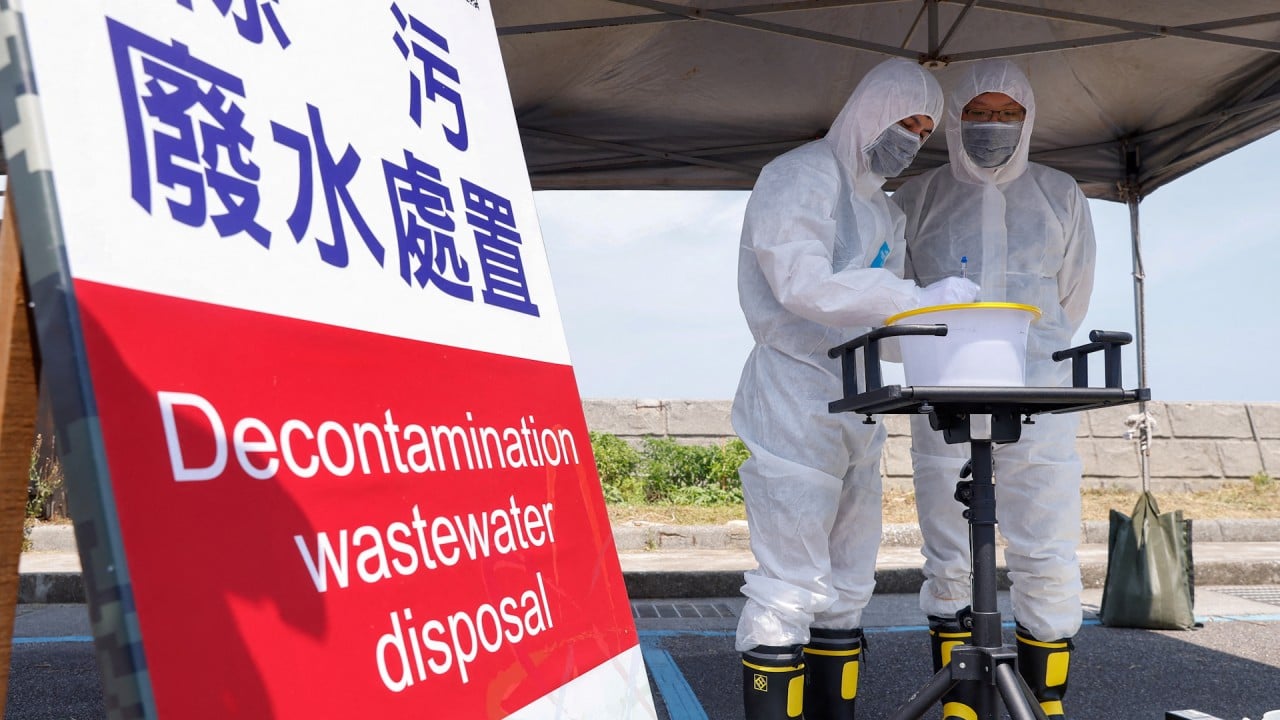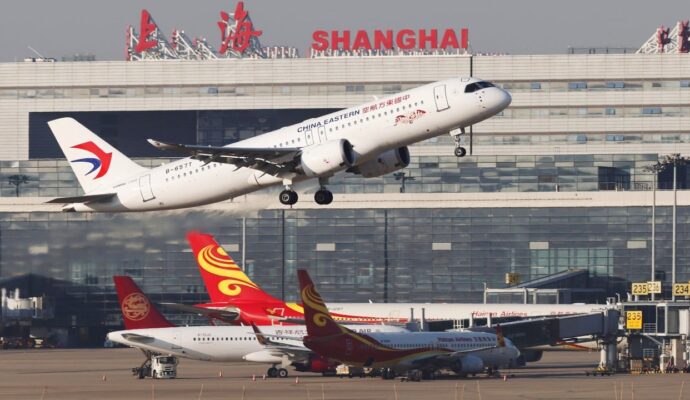It can change or abort its attack missions mid-flight as needed, Chi noted.
Because it is configured for multi-tube launches from such platforms as trucks, planes, unmanned aerial vehicles and ships, the unmanned aerial vehicle (UAV) can be dispatched from land, air and sea, Chi said, during a presentation ahead of a defence technology show held in Taipei last week.
Advertisement
Chi said that the drone – with its prowling capabilities, larger size and bigger warhead payload – will be 10 times more lethal than its predecessor.
In March, the institute unveiled the Type 1 – a portable loitering vehicle capable of precise beyond-visual-range strikes on targets through its image tracking and pattern recognition systems.
The Type 1, which also has retractable wings, a remote-controlled range of up to 10km (6.2 miles), and a hovering capability of 15 minutes, can be carried in a single soldier backpack and launched through a pneumatic tube or air-pressure capsule pipeline, Chi said.
Now undergoing trials, the Type 1 features an electro-optical and infrared system, similar to the one used by its US peer, according to Chi.
Advertisement
But because the Type 1 is relatively tiny, its destructive capabilities are limited, compared to the Type 2 when it comes to attacking large-scale targets or major facilities, Chiu noted.
“Also, multiple layers of tubes can be mounted at the launching platforms, allowing a number of the munitions to be ejected at the same time,” Chi said, adding that the drones can be used day or night.
Advertisement
“The munition is suitable for saturation attacks and precise, beyond-visual-range strikes on fixed and mobile targets using its multi-module seeker,” Chi said, referring to the Type 2’s artificial intelligence-guided capability, smart-recognition and anti-radiation features, and electro-optic and infrared image tracking systems.
The Type 2 also has a “man-in-the-loop” function “to allow the fire control system to be switched to manual from AI-operation to prevent it from locking in on a target that should not be attacked.”
Advertisement
Chi declined to detail the Type 2’s range or how long it can hover near a target, saying the institute “is still developing other functions of the munition.”
Local experts said that while the Type 2 appears to be a more advanced suicide drone, it will take time to fully develop and mass produce the weapon for military use.
“It remains to be seen if the munition will be used by our military as it is still in the development process,” said Shu Hsiao-huang, a senior analyst at the Institute for National Defence and Security Research, a government think tank in Taipei.
Advertisement
He said the island’s defence ministry may opt to purchase US drones if the domestically developed vehicle does not meet requirements, or if it cannot be produced soon enough.
The United States, like most countries, does not recognise Taiwan as an independent state, but is opposed to any unilateral change of the cross-strait status quo by force.
“They are still very useful in our near-sea and coastal defences,” Shu said.
Loitering weapons like the Type 2 could stage suicide attacks on PLA targets and create serious damage, he added.
‘Substantial threat’ from PLA’s Fujian carrier: Taiwanese defence ministry
‘Substantial threat’ from PLA’s Fujian carrier: Taiwanese defence ministry
“Though the high explosive warheads of the drone might not be able to destroy an entire PLA warship, a strike on the vessel’s radar system, for example, would paralyse the tracking and firing functions of the ship, resulting in its failure to attack our facilities,” Shu noted.
Chen Kuo-ming, the chief editor of the Taipei-based Defence International magazine, said the development of suicide drones like the Switchblade is becoming an international trend since such strategies have proven effective for Ukraine’s military against the much larger Russian forces.
“It definitely is the right direction for our weapon research units to develop those drones, but it is equally important for us to develop anti-drone systems or solutions,” Chen said, referring to the PLA assets.
The military needs to work with Taiwan’s civilian companies to develop a strong drone force, given that some companies already have the ability to design and build the munitions, he said, noting that Taiwanese combat drones were exported to Poland last year.
China blacklists US defence companies over Taiwan arms sales
China blacklists US defence companies over Taiwan arms sales
DronesVision, an unmanned aerial vehicle supplier based in Taiwan’s northern city of Keelung, reportedly shipped 800 of its Revolver 860 combat drones to Poland for use in Ukraine.
The former chief commander of Taiwan’s army, General Hu Chen-pu, said the war in Ukraine shad put military drones at the forefront of modern warfare, and the low-cost and efficient vehicle would be key in a potential attack on Taiwan by the PLA.
“[The PLA] has already amassed its military drones for use in various missions near Taiwan,” he said, adding that since April it had even sent combat and reconnaissance drones to circle the island for training and intelligence gathering purposes.
Advertisement



